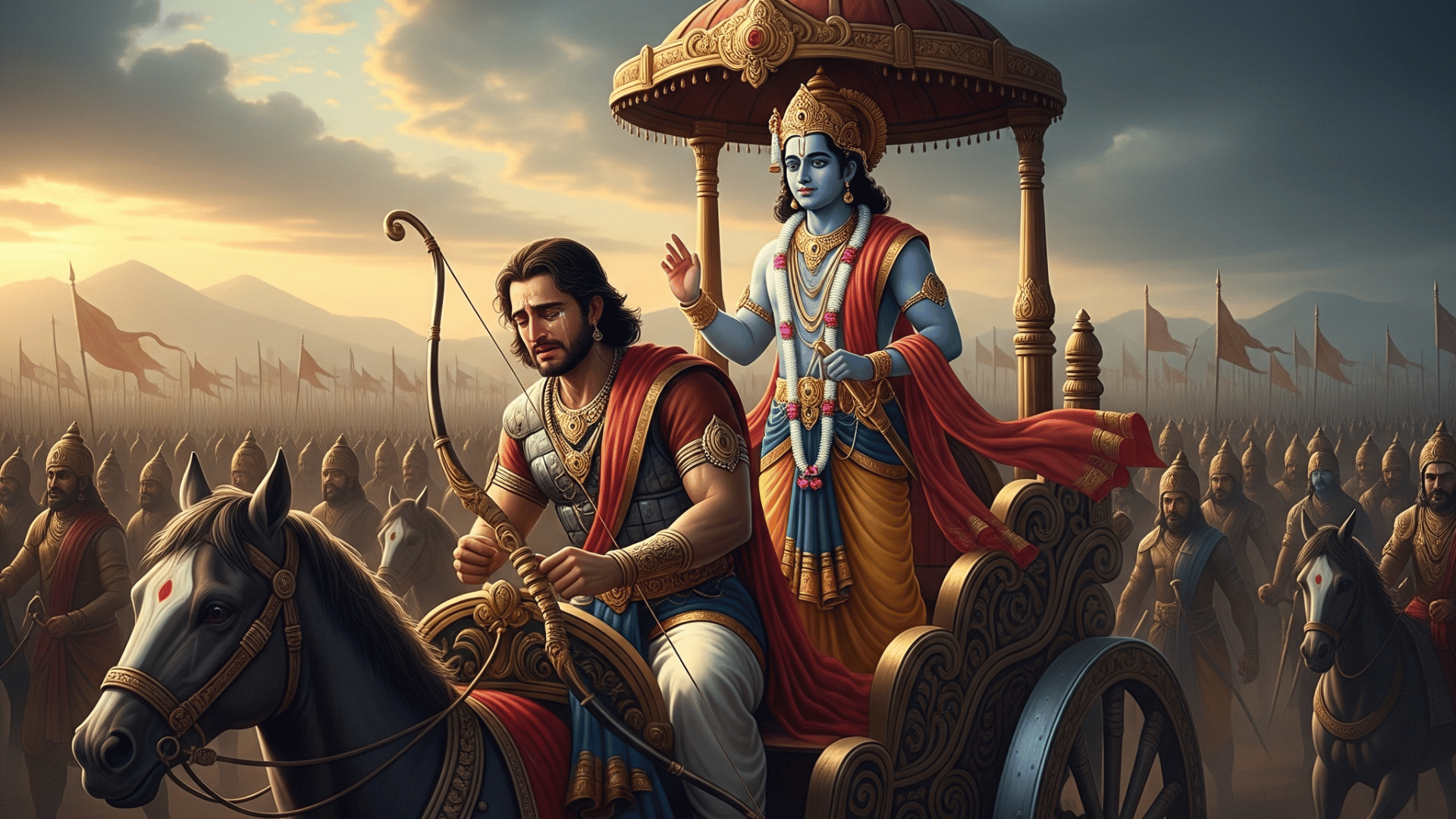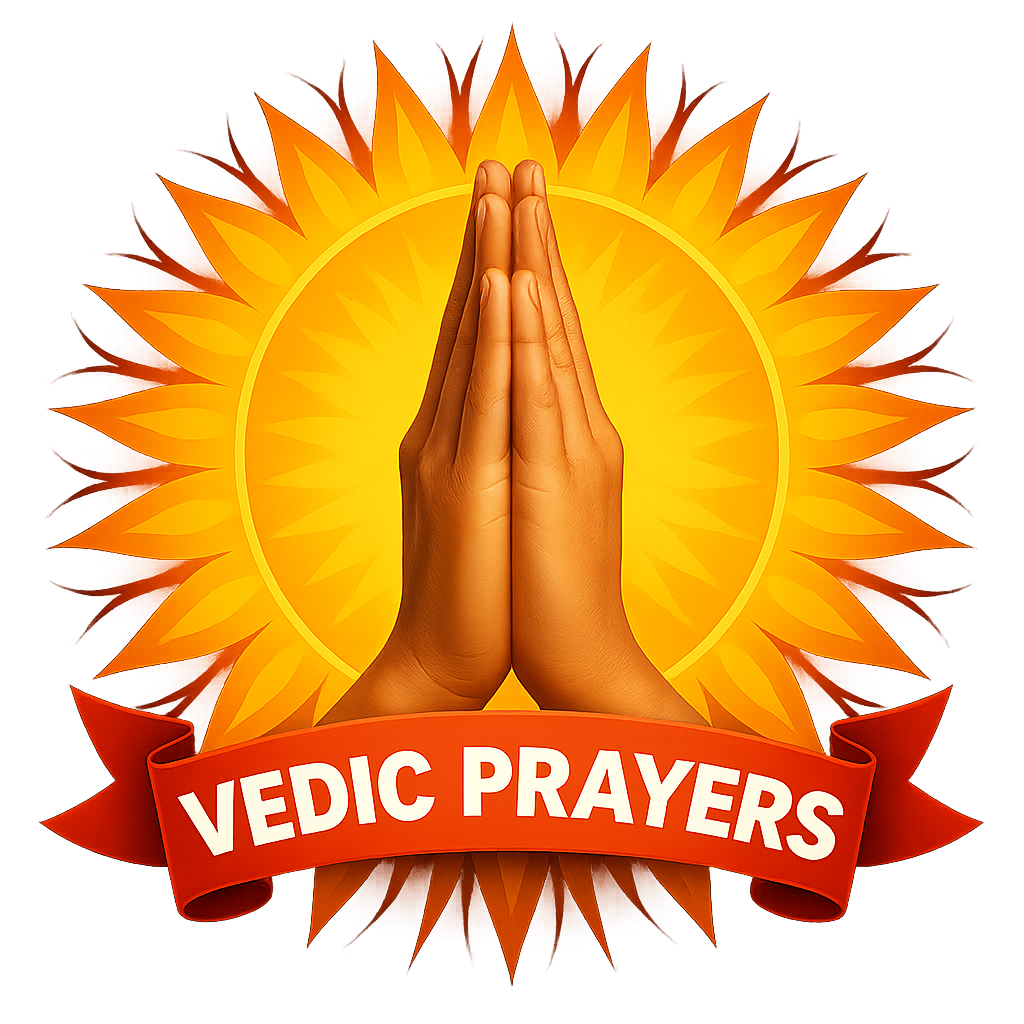
Chapter 1 – Arjuna’s Despondency
Verse 47
Evam’, uktva, ArjunH, sankhye, rathopasthe, upaavishat’,
Visrjya, sasharam’, chaapam’, shoksanvignmaanasH ||47 ||
Sanjaya said:
“Thus, after expressing his feelings to Lord Krishna, Arjuna—whose mind was overwhelmed with sorrow—steadied himself briefly and, while standing on the chariot, spoke once again.”
Explanation:
This verse marks the final shloka of Chapter 1 of the Bhagavad Gita and represents the emotional climax of the scene.
- Arjuna, upon seeing his own relatives and loved ones arrayed on both sides of the battlefield, is deeply affected by grief and attachment.
- Though his mind is disturbed, he still attempts to compose himself enough to express what he is feeling.
- The word “Rathasthaḥ” (standing on the chariot) symbolizes that externally he is in the position of a warrior, ready for battle, but internally he is torn with emotional and moral conflict.
- He shares his pain, confusion, and compassion—laying the groundwork for the divine discourse that is about to follow.
Key Takeaways:
- This verse reflects Arjuna’s inner turmoil and his hesitation about engaging in war.
- Sanjaya narrates this moment to King Dhritarashtra, emphasizing how even a mighty warrior like Arjuna is mentally broken at the sight of familial destruction.
- It sets the stage for the upcoming teachings of Lord Krishna, where He will guide Arjuna about Dharma (duty), wisdom, and spiritual truth.
















